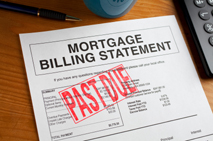Chapter 13 Bankruptcy - Restructure debt, make affordable payments

Chapter 13 bankruptcy (Federal Law 11USC) can allow you to repay your past-due debts as well as current debts over the course of 3 to 5 years. Based upon the total amount of your debt and current disposable income, the bankruptcy trustee will develop a structured, affordable repayment program that your creditors must accept. Such repayment programs often allow the debtor to pay back only a portion of his or debts. After successfully fulfilling the repayment program, the debtor's remaining debts are discharged with some exceptions, such as home mortgage loans.
**IMPORTANT: Once you have hired an attorney, creditors are no longer legally allowed to call and harass you regarding debt.
Chapter 13 Bankruptcy Candidates
Candidates for this type of bankruptcy are typically those who have a steady income but have become submerged in debt and are unable to fulfill their repayment obligations. They often have assets that they do not want to lose, such as a home or vehicle. Chapter 13 bankruptcy can prevent foreclosures, repossessions, wage garnishment, lawsuits, and tax collections. It can also eliminate penalties and stop compounding interest from accruing on all or a portion of tax debt.
How Much of My Debt Will I Have to Repay?
The total amount that the debtor must repay in a Chapter 13 plan will be the greater of:
1) The individual's monthly disposable income aggregated over a certain period. Disposable income is the portion of your income that remains after subtracting monthly allowable exemptions setforth by the IRS, such as for mortgage or rent, food, and transportation. More generally, it is the amount of income that is non-exempt. -OR- 2) The amount creditors would have received had the debtor's property been liquidated in a Chapter 7 bankruptcy. This amount is the value of the debtor's non-exempt assets, i.e., the value of the assets that exceed the allowable exemptions.
Once a Chapter 13 plan has been approved, the bankruptcy court will issue a wage withholding order that will require the debtor's employer to deduct the court-ordered payment and send it directly to the trustee of the case. If the debtor is self-employed, he or she will be responsible for sending the payment each month.

Loan Modification versus Chapter 13 Bankruptcy
Loan modification typically involves interest rate reductions, extension of the loan term, and re-amortization of past due amounts. Very rarely will the lender offer a plan that involves reducing the principal amount of the loan that you are to repay. With Chapter 13 bankruptcy, you are only required to repay a fraction of your debt based upon your income. Moreover, this agreement is legally binding; therefore, your debtors cannot sue to recover additional monies.
Chapter 13 Process
We file a Chapter 13 Bankruptcy petition in the U.S. Bankruptcy Court. Upon being filed, an "automatic stay" will come into effect which prohibits your creditors from continuing their efforts to collect debts that you have with them. During this time you must continue with your scheduled payments, but do NOT have to worry about past missed payments.
Based upon the information you provide during your visit to our office, we'll prepare your schedules, statement of financial affairs, and Chapter 13 plan, and then file them. Schedules are detailed listings of your assets and liabilities, as well as income and expenses. The statement of financial affairs contains your answers to questions that are established by the bankruptcy court regarding your financial condition. The Chapter 13 plan is the repayment plan that we submit to the court - we create the plan according to what you can afford to repay over time. Thirty days after the plan is filed, you will begin making the payments that we proposed in the plan.
You will then attend, with us, the "meeting of creditors", which occurs usually about sixty days from the time the petition was filed. During this hearing you will be asked some general questions by the court. We will instruct you as to the type of questions.
Finally, we will attend a hearing at the United States Bankruptcy Court to determine if the court accepted your plan. Because of the time and forethought we expend in preparing plans, they are very rarely challenged. Once approved, you will repay your creditors according to the plan's guidelines, and once finished, all remaining debt is discharged.




